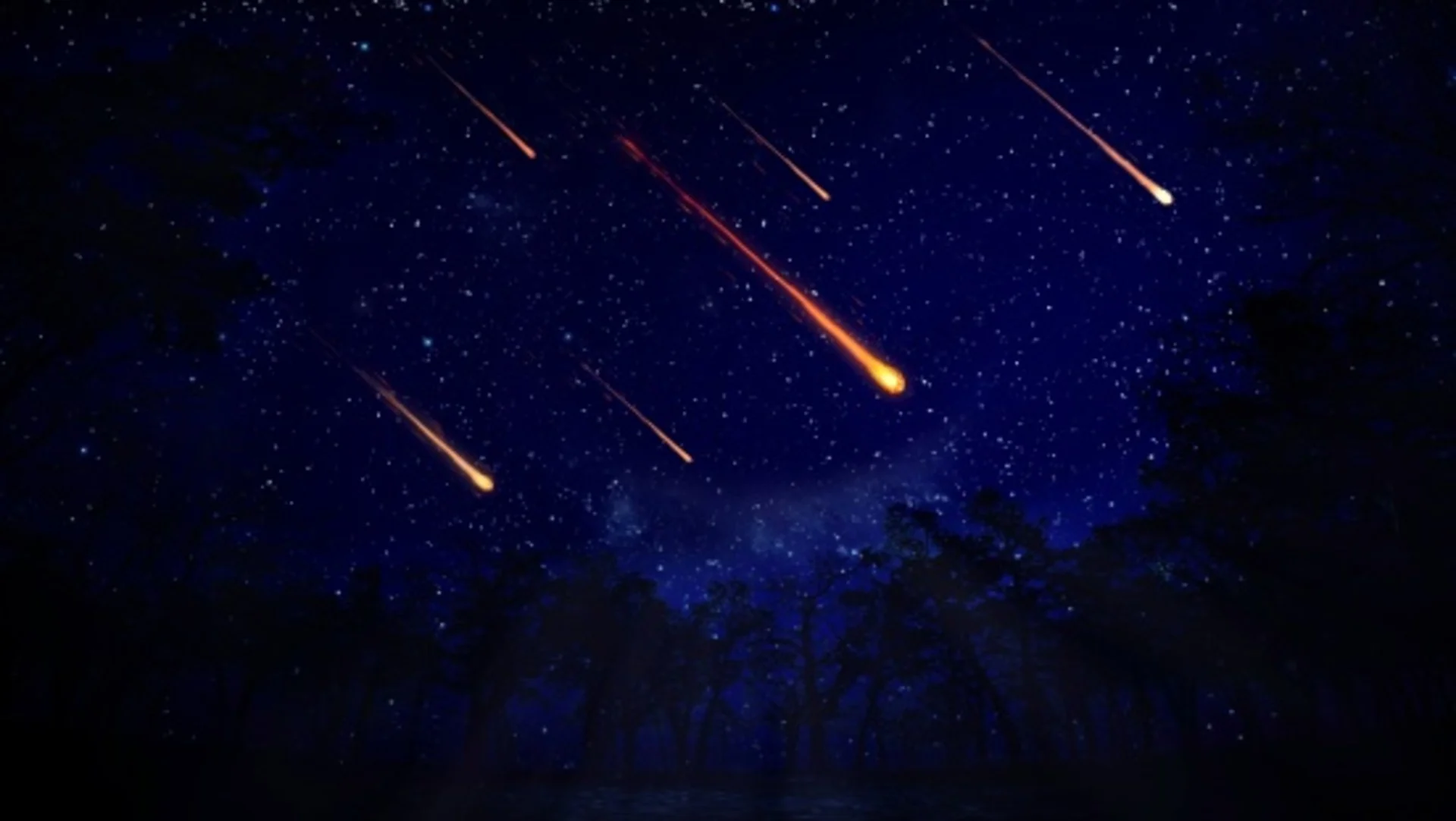
Keep your eyes to the sky! Fall is meteor shower season!
Look up for some amazing fall stargazing and sky-watching events!
With the nights growing longer, Fall is an excellent time of year to stargaze.
The 'ring of fire' solar eclipse was spectacular, but there is still plenty to see in the night skies. Specifically, there are so many meteor showers happening that they overlap, providing us with a fantastic show all season long.
Here is The Weather Network's guide to Fall 2023 astronomical events:
Sep 23: Fall Equinox (Northern Hemisphere)
Sep 29: Super Corn Moon (Harvest Moon)
Oct 2: Jupiter near the Waning Gibbous Moon
Oct 8-9: Draconid Meteor Shower peak
Oct 14: New Moon and Annular Solar Eclipse
Oct 19: Southern Taurid Meteor Shower peak starts
Oct 21-22: Orionid Meteor Shower peak
Oct 23: Venus highest above eastern horizon before sunrise
Oct 28: Full Hunter's Moon (Partial Lunar Eclipse)
Oct 29: Jupiter near the Waning Gibbous Moon
Nov 3: Jupiter Opposition
Nov 6: Southern Taurid Meteor Shower peak ends
Nov 9: Venus very close to the Waning Crescent Moon
Nov 11: Northern Taurids Meteor Shower peak
Nov 13: New Moon
Nov 17: Mars Solar Conjunction
Nov 17-18: Leonid Meteor Shower peak
Nov 25: Jupiter near the Waning Gibbous Moon
Nov 27: Full Beaver Moon
Dec 4: Mercury highest above western horizon after sunset
Dec 12: New Moon
Dec 13-14: Geminid Meteor Shower peak
Dec 22: Winter Solstice (Northern Hemisphere)
Visit our Complete Guide to Fall 2023 for an in-depth look at the Fall Forecast, tips for the season, and much more!
The Moon and the Planets

The three Full Moons of Fall 2023, their popular names, dates, and special properties (supermoon, Harvest Moon). Credit: Scott Sutherland/NASA's Scientific Visualization Studio, supermoon data c/o Fred Espenak, background via Celestia
Throughout the fall season in 2023, we will see three Full Moons — the September 28-29 Super Corn Moon (also this year's Harvest Moon), the October 28-29 Hunter's Moon, and the November 26-27 Beaver Moon.
While watching the changing phases of the Moon, we can also spot some bright planets in the sky.
Right off the start, the largest planet in our solar system, Jupiter, is exceptionally bright. Look up on the night of October 2 to see it shining close to the Gibbous Moon, and these two will 'team up' again on the nights of October 29 and November 25.

In this simulation of the night sky, the Moon and Jupiter shine together (the Moon is shown at 3x size to highlight its phase). Credit: Stellarium/Scott Sutherland
If you keep a close eye on Jupiter throughout the season, you'll notice that it rises around 9 p.m. local time to start and then about 4-5 minutes earlier each night until November. At the same time, the planet will grow steadily brighter as it approaches its closest point to Earth on November 1-2 and then reaches Opposition — when it is on the exact opposite side of Earth from the Sun — on November 2-3. From there, Jupiter will continue to rise earlier each day as Earth pulls away from it, and it will grow progressively dimmer in our sky for the rest of the season.
Each night you see Jupiter, you can also find Saturn as well. It's smaller and not as bright, thus a little harder to find. This is especially true if there is a lot of light pollution in your area. However, starting from Jupiter, scan to the west through the southern sky and you may spot the ringed planet shining steadily there.
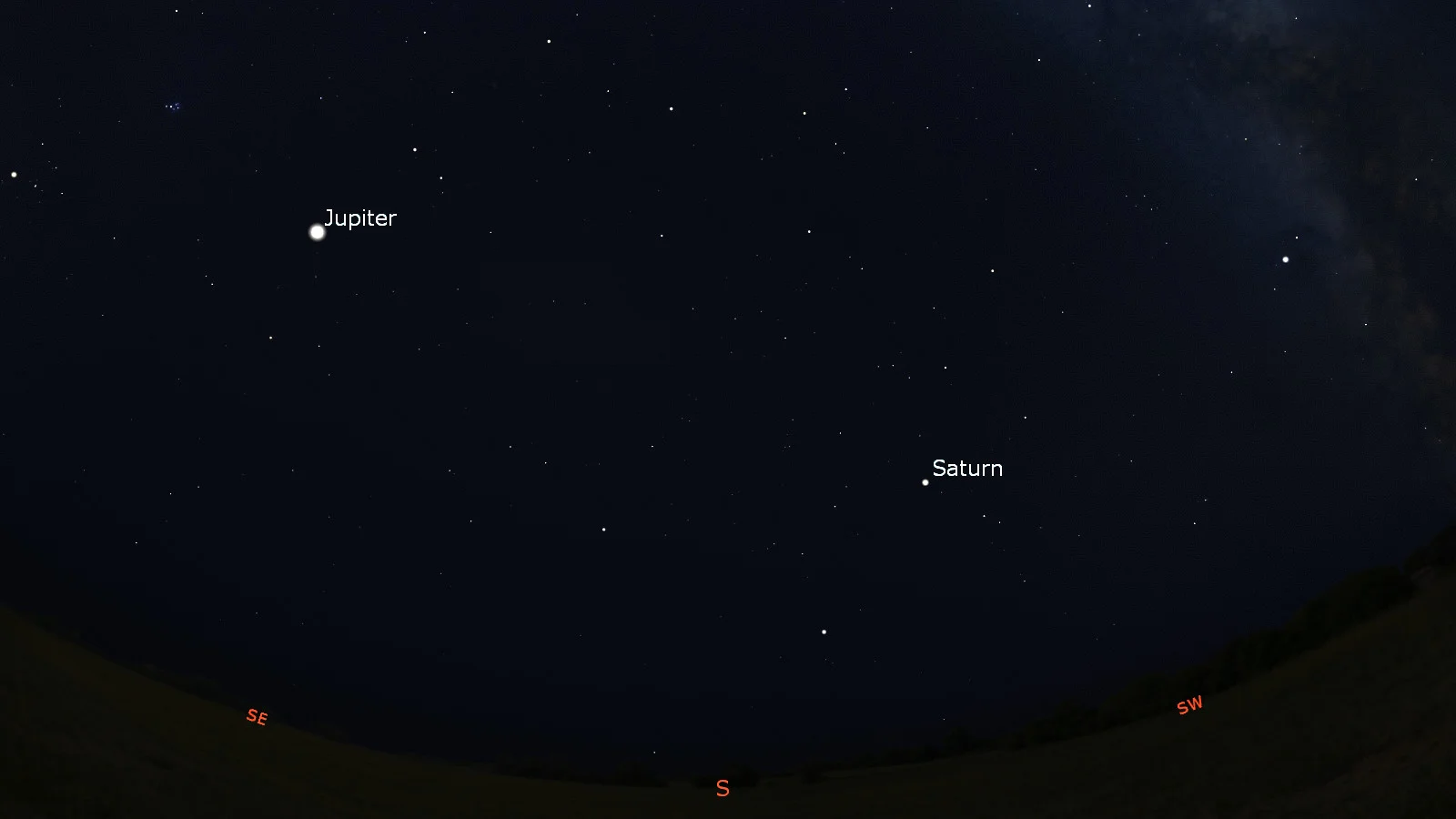
Jupiter and Saturn shine on a clear night in early October. The Milky Way is visible off to the southwest. Credit: Stellarium
Look for "morning star" Venus as the brightest object in the eastern pre-dawn sky all season long.
Through the end of September and much of October, the planet will climb higher and higher above the horizon each morning. On October 23, Venus reaches its "greatest western elongation" — its highest point in the eastern pre-dawn sky. Then, day after day, it will slowly dip back towards the horizon.
Also, we can catch Venus very near the thin Crescent Moon in the eastern pre-dawn sky on November 9. According to the Royal Astronomical Society of Canada's Observer's Handbook 2023, if you're watching from extreme northern Canada, Greenland, parts of Europe, or North Africa, you can even see the planet dip behind the Moon briefly before reemerging.

From most of Canada, Venus and the thin crescent Moon appear close enough to touch on the morning of Nov. 9, 2023. Credit: Stellarium/Scott Sutherland
We don't see Mars this season, as the planet is lost in the glare of daylight as it approaches 'solar conjunction' — the exact opposite side of the Sun from Earth — on November 17.
In fact, when Mars is within 2 degrees of the Sun from November 11 to 25, NASA will cease most robotic operations on and around the planet. This is to prevent errors from creeping into their instructions due to interference from the Sun. On the surface, Curiosity, Perseverance, and Ingenuity will likely take a break during that time. However, their teams at JPL may give them some easy travel or science to perform. In orbit, MRO, Mars Odyssey, Mars Express, and MAVEN will continue to circle the planet and send back data, but no new commands will be sent.
As for the remaining inner planet, Mercury is also too close to the Sun to see right when the season begins. However, it will emerge from the glare of sunset in late November and reach its highest point above the western horizon ("greatest eastern elongation") on December 4. It will only stick around for a short time, though, as it dips back below the horizon a little over a week later.
DON'T MISS: What is the mysterious Moon Illusion?
The Season of Meteor Showers
It's possible to spot a meteor flash through the sky any night. However, at certain times of the year, we can see numerous ones streak overhead, each time originating from a different area of the sky. These events are called meteor showers, and they are caused by Earth flying through streams of ice and dust in space that are left behind by comets and asteroids.
Each meteor shower lasts for several days, and there's typically one specific night when it peaks, delivering the greatest number of meteors for that shower. Half of the dozen or so prominent meteor showers that happen throughout the year occur during the Fall season.

The night sky during the peak of the Draconid meteor shower on October 8-9, 2023. Credit: Stellarium/Scott Sutherland
The Draconids are the first to peak. This is one of the shortest meteor showers of the year, lasting only 5 nights, from October 6-10. It reaches its peaks on the night of Oct. 8-9, when it typically produces between 5-10 meteors every hour.
Although it is relatively weak compared to other meteor showers, rare outbursts from the Draconids have put on some of the most spectacular meteor displays of the 20th century!

The best viewing for the Orionid meteor shower will be in the hours before sunrise on Oct 21, 2023. Credit: Stellarium/Scott Sutherland
The Orionids peak next, and represent the second of two annual meteor showers produced by one object — Halley's Comet. The meteor shower starts in early October, runs for the entire month, and is famous for producing bright meteors. During its October 20-21 peak, this shower can deliver up to 20 meteors per hour. Timed as it is, with only a Waxing Crescent Moon that sets shortly after sunset, the Orionids could put on a pretty good show this year.

The radiants of the Taurid meteor showers are positioned very close together in the sky each Fall. Credit: Stellarium/Scott Sutherland
Twin meteor showers — the southern and northern Taurids — overlap throughout the season, with meteors from both streaking out of roughly the same place in the night sky.
That's no coincidence. The 'parent objects' of these meteor showers — asteroid 2004 TG10 for the northern Taurids and Comet 2P/Encke for the southern Taurids — are thought to be two parts of an ancient comet that broke apart long ago. Since then, the two have drifted apart, each producing its own distinct meteor shower.
The northern Taurids run from October 13 to December 2 and produce around 5 meteors per hour during their peak on November 11.
The southern Taurids consistently begin around September 23, and depending on the year, they can last until either November 13 or December 8. They also have an 'odd' peak that can occur between October 19 and November 6, delivering between 5-10 meteors per hour at that time.
According to Robert Lunsford from the American Meteor Society, this odd behaviour for the southern Taurids is because Comet Encke's debris stream is very complex. In particular, the shifting dates are mainly due to the 'Taurid Swarm' — a second stream of gravel-like material embedded within Encke's debris that Earth encounters a few times each decade.

Leonid meteors appear to radiate outward from within the constellation Leo during the November 17-18 peak. Credit: Stellarium/Scott Sutherland
The Leonids are another weak meteor shower of the season, typically producing a handful of meteors each night from November 3 to December 2, and about 10 meteors per hour during its peak on November 17-18. However, similar to the Draconids, they are periodically capable of delivering spectacular outbursts in the form of meteor storms!
In 2023, we could see a slight uptick in activity from the Leonids, to around 15 meteors per hour during the peak. We'll have to wait until 2033 for the next outburst, though.
One of the three best meteor showers of the year comes around towards the end of Fall.
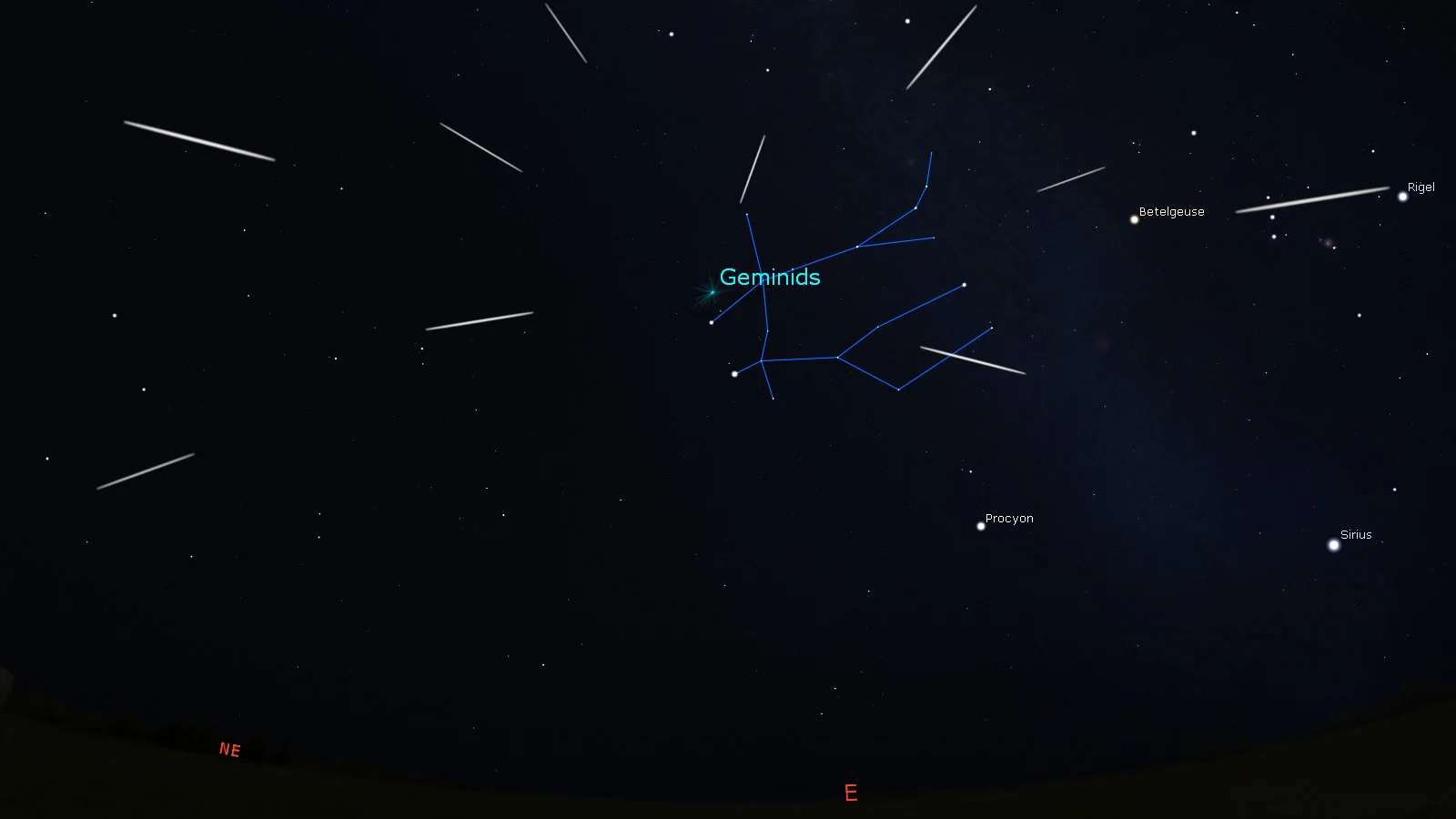
The radiant of the Geminid meteor shower is in the eastern sky during its peak on the night of Dec. 13-14, 2023. Credit: Stellarium/Scott Sutherland
The Geminid meteor shower, which originates from 'rock comet' asteroid 3200 Phaethon, occurs from December 4 to December 20 and peaks on the night of the 13th to the 14th.
The Geminids consistently deliver a spectacular show with reasonably bright and sometimes multicoloured meteors. During the night of the peak, it can deliver up to 100 or more per hour. Only bad weather or a bright moon (or both) tends to spoil the show. However, this year, the peak happens just one night after the New Moon, giving us excellent dark sky conditions for the event.
ESSENTIAL READING: How to get the most out of meteor showers and other night sky events
Annular solar eclipse

This image of the May 21, 2012 annular solar eclipse was taken from Tokyo, Japan. Credit: Nakae/Wikimedia Commons (CC-BY-2.0)
On October 14, 2023, the Earth, Moon and Sun will line up perfectly to produce a solar eclipse.
As the New Moon passes directly between the Earth and the Sun on that day, the Moon's shadow will sweep across North and South America.
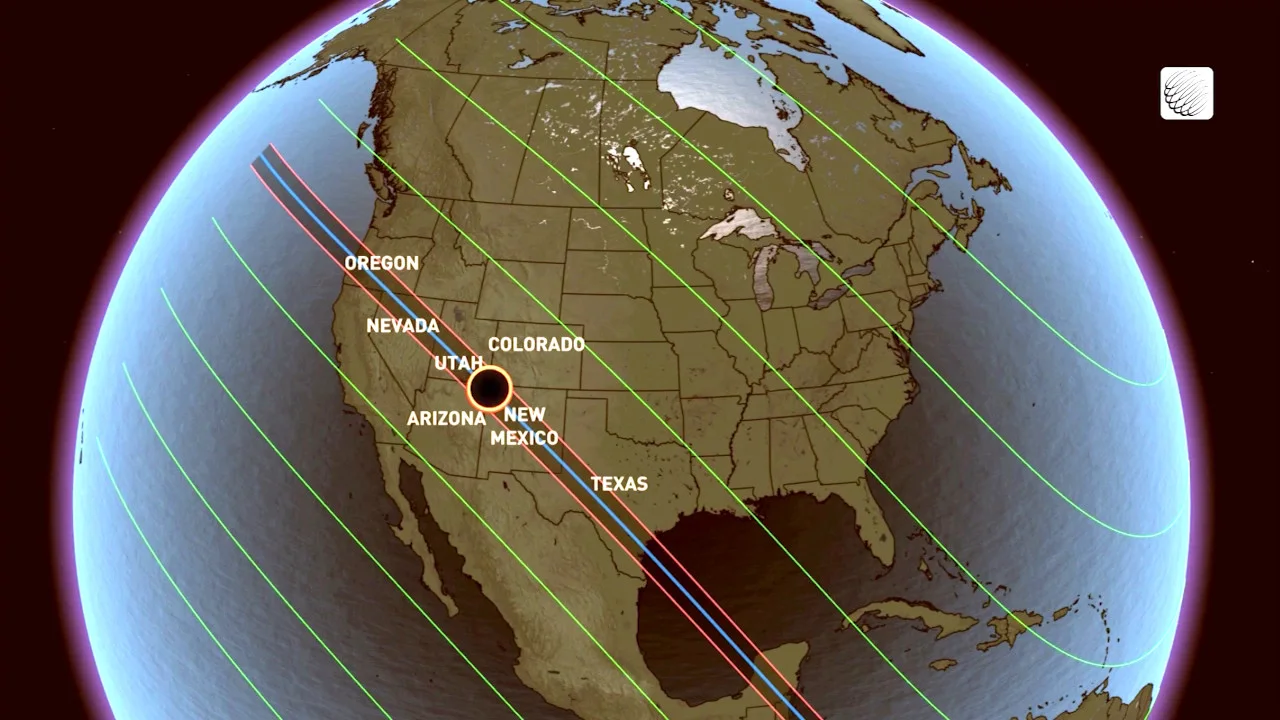
However, this won't be a total solar eclipse, as we saw in the summer of 2017. Due to its elliptical orbit around Earth, the Moon is farther away from Earth during this event than it was on Aug. 21, 2017. Thus, it will appear smaller to us and will only cover most of the Sun's disk, leaving a 'ring of fire' surrounding it.
This is known as an Annular Solar Eclipse.
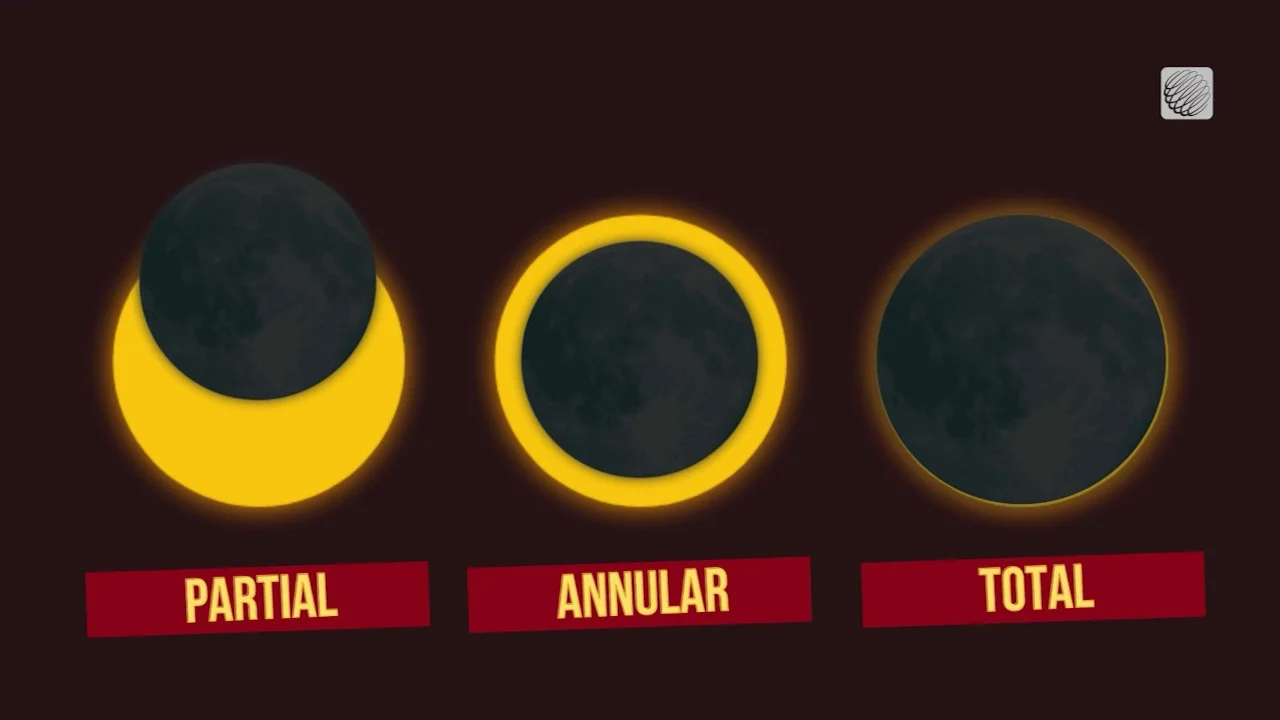
The full 'ring of fire' will be visible to anyone along the path of maximum eclipse. This will trace a route through the United States from Oregon to Texas, then across the Gulf of Mexico, Central America, and northern South America.
Here in Canada, we will only see a partial solar eclipse. The best views of the event will be from the south coast of British Columbia and Vancouver Island. The farther east an observer is, the less of the Sun will be covered up by the Moon.

Special note: During an annular solar eclipse, there is NO safe time to look at it without eye protection. Special mylar solar viewing glasses (aka eclipse glasses) should always be worn when viewing the event. Alternatively, some indirect methods, such as an eclipse projector, can be used to watch it.
If you miss out on this event, don't worry too much. Just wait until April 8, 2024, when a total solar eclipse will be directly visible from southern Ontario to Newfoundland.
Partial lunar eclipse
Due to the angles of the Sun and Moon lining up, solar eclipses and lunar eclipses typically go together. This season is no exception.
The next Full Moon after the annular solar eclipse, on the night of October 28-29, will feature a partial lunar eclipse.

The angles aren't perfect for this event, though. The Full Moon will only pass through the edge of Earth's shadow, instead of directly through it. During the event, it will be fully immersed in the penumbra — the diffuse outer part of the shadow — and will dip only its south polar region into the darker umbra.
In Canada, the eclipse will only be visible in the eastern parts of the country. Observers in Cape Breton Island, Newfoundland, Labrador, and Nunavut will be able to see the end of the partial eclipse just as the Moon is rising on the evening of the 28th. Those in the rest of the Maritimes, Quebec, and Ontario will only see the end of the penumbral eclipse as the Moon rises above the horizon.
Winter Solstice
At 3:37 UTC on December 22, Earth will reach the point in its orbit where the southern hemisphere will be pointed towards the Sun. This will mark the Winter Solstice for the northern hemisphere when the Sun has reached its lowest position in the sky for the year.
In Canada, the Winter Solstice occurs on the night of December 21 at:
11:57 p.m. NST,
11:27 p.m. AST,
10:27 p.m. EST,
9:27 p.m. CST,
8:27 p.m. MST, and
7:27 p.m. PST.
This is also the shortest day and the longest night of the year for the northern hemisphere, although exactly how much day and night you experience depends on your location. For example, Windsor, Ontario, the southernmost city in Canada, will have just under 9 hours and 5 minutes of sunlight on the 21st and 22nd, so nearly 15 hours of night. Meanwhile, Edmonton, the northernmost large city in the country, will have around 7 hours and 28 minutes of daylight and over 16 hours and 32 minutes of night.
(Thumbnail image is of a meteor shower, artwork - stock illustration courtesy of ANDRZEJ WOJCICKI/Getty Images. Creative #: 488635593)











